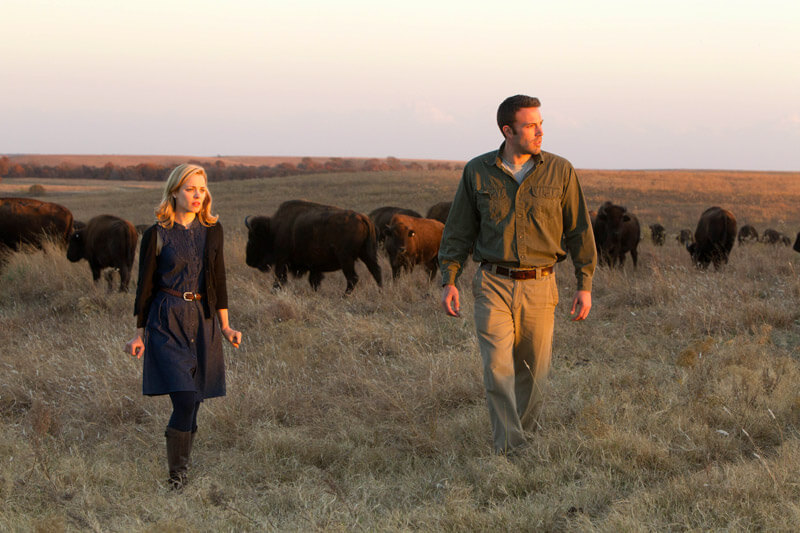One of my favorite weeknight activities is to go see a movie alone. Without the pressures of outside opinion or the expectation of reaction, the entire experience becomes infinitely more personal – a choice to experience something with myself and only myself. Everything I feel as a result is mine and only mine. It’s a rare sort of film that reserves this impulse, but it usually falls into the category of intense emotionality or poignant cinematography. These are two elements I’m particularly partial to and when weaved together, it’s a no-brainer. Such was the case with To The Wonder.
The trailer to Terrence Malick’s newest film promised me everything I could want for such an experience. I never had the chance to see Tree of Life, but I kept hearing how visually stunning it was. So when I saw that To The Wonder was playing at one of my favorite local theaters, I knew I had to make the time to go see it.
[youtube https://www.youtube.com/watch?v=NTAzcTZTY1g]
“Emotions, they come and go like clouds. Love is not only a feeling; you show love. To love is to run the risk of failure, the risk of betrayal. You fear your love has died and perhaps is waiting to be transformed into something higher.”
Films are typically a marriage of multiple art forms; a composed and complete narrative unfolding with visual and musical support. As an audience, we’re used to this formula: introduction + conflict + solution = end. I’m guilty of it too, expecting that a movie should give me the questions, the answers, and the detailed solution along with a fitting score. To The Wonder was made from a different sort of formula, taking me through a range of emotions from being completely in awe to tapping my feet wondering when it will all end. Dialogue is sparse, mostly internal and barely heard. The cinematography is undeniably incredible, but sometimes flirts with the edge of corny. Fortunately the weirdly magical landscapes are balanced with the mundane interiors of Midwest suburbia, grounding them in a more complete reality and ultimately emphasizing their preciousness.
It might be more fitting to call this film a painting in motion rather than a movie. Instead of feeding us a storyline, Malick composes and illustrates a collection of tones. He envelops us with mood and feeling instead of resolution. Small moments carry as much importance as significant events and they are strung together like memories of a broken heart (apologies for the overwhelming cheese factor) – convoluted and half-forgotten.
In regards to how I felt during the movie…I can’t explain it to you any easier than I can explain being in love. And obviously, that is exactly what the movie is centered around – the sort of love that is consuming, transcendental, annoying, ordinary, and breathtaking all at once. This sort of love fills us up and yet also makes us feel incomplete. The beauty in the end is that the entire film-viewing experience reflects these characters’ experience of that love. They yearn for it in hopes to feel whole and make sense of everything they’ve done. But that feeling of completeness doesn’t exist and even if it does, then only in the tiniest amounts for brief periods of time.
What else can I say? I’m predicting that you probably won’t like it. You truly have to be in a specific mood and mindset for this type of film and even if you’re in that mood, there are going to be moments when you are extremely unsatisfied. If you’re all in to leave wanting more, then go for it.
[ images via Magnolia Pictures ]








2 Comments
Pingback: covered in mud | tide & bloom | inspiration, creativity, and growth | atlanta events, food, culture, beauty
Pingback: whatever will be, will be | tide & bloom | inspiration, creativity, and growth | atlanta events, food, culture, beauty